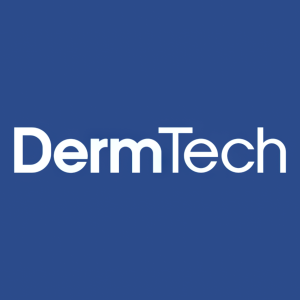DermTech Pigmented Lesion Assay (PLA) to Enrich Melanoma Positivity Nearly Five-Fold in Biopsied Lesions: Findings from a Large US Registry
DermTech, Inc. (NASDAQ: DMTK) (“DermTech”), a leader in precision dermatology enabled by a non-invasive skin genomics platform, announced today that SKIN has published the results of a large registry study finding that the evaluation of genomic atypia using DermTech’s Pigmented Lesion Assay (the “PLA”) may be a superior approach to guide treatment decisions and manage pigmented lesions, when compared to visual assessment of pigmented lesions.
Melanoma is a life-threatening skin cancer where early detection and intervention can significantly improve clinical outcomes and eliminate disease. An estimated 196,060 cases of melanoma were expected to be diagnosed in the United States in 2020 and expected to cause approximately 6,850 deaths, many of which could have been prevented through early detection.
The study, “Genomic Atypia to Enrich Melanoma Positivity in Biopsied Lesions: Gene Expression and Pathology Findings – A Large U.S. Registry,” reports that lesions biopsied based on genomic atypia criteria identified by the PLA were associated with a nearly five-fold enrichment of melanoma in the patient specimens compared to those biopsied based solely on visual assessment criteria. This is the 20th peer-reviewed publication supporting use of the PLA to better guide treatment decisions.
This large, year-long registry study conducted in the U.S. included 90 providers across 53 dermatology offices and assessed 3,418 pigmented lesions clinically suspicious for melanoma using the PLA. PLA-positive lesions were then biopsied using standard pathological methods. Pathology reports for 313 of 316 PLA-positive cases biopsied to rule out melanoma based on genomic atypia were available for subsequent analysis by the research team. The results of the study demonstrate that:
-
Overall,
18.7% (59/316) of PLA positive lesions were histopathologically diagnosed as melanomas with14.9% (47/316) diagnosed as melanomas in situ and3.8% (12/316) as invasive melanomas. -
47.5% of the histopathologically-confirmed melanomas demonstrated a double positive genomic signature (LINC and PRAME) while23.7% were single-positive for LINC and28.8% were single-positive for PRAME. - Gene expression of both LINC and PRAME was present in increasing percentages of melanocytic lesions, corresponding with pathology reports showing increasing levels of atypia.
The published findings in SKIN can be found here: https://jofskin.org/index.php/skin/article/view/1146
Dr. Brook Brouha, M.D., Ph.D., the study’s lead author commented, “I start every skin exam with a visual clinical inspection. When I find difficult borderline lesions, the PLA’s objective genomic information informs my treatment decision. I now detect more early-stage melanomas with fewer invasive procedures.”
“There is clear patient and clinician benefit when genomic atypia information is added to visual inspection to guide biopsy decisions and enhance early melanoma detection. Patients love the additional peace of mind that the high performance of the PLA offers, and they also appreciate not being cut when avoidable,” added Burkhard Jansen, M.D., DermTech’s chief medical officer.
About DermTech
DermTech is the leading genomics company in dermatology and is creating a new category of medicine, precision dermatology, enabled by our non-invasive skin genomics platform. DermTech’s mission is to transform dermatology with our non-invasive skin genomics platform, to democratize access to high quality dermatology care, and to improve the lives of millions. DermTech provides genomic analysis of skin samples collected non-invasively using an adhesive patch rather than a scalpel. DermTech markets and develops products that facilitate the early detection of skin cancers, and is developing products that assess inflammatory diseases and customize drug treatments. For additional information on DermTech, please visit DermTech’s investor relations site at: www.DermTech.com.
Forward-looking Statements
This press release includes “forward-looking statements” within the meaning of the “safe harbor” provisions of the Private Securities Litigation Reform Act of 1995. The expectations, estimates, and projections of DermTech may differ from its actual results and consequently, you should not rely on these forward-looking statements as predictions of future events. Words such as “expect,” “estimate,” “project,” “budget,” “forecast,” “anticipate,” “intend,” “plan,” “may,” “will,” “could,” “should,” “believes,” “predicts,” “potential,” “continue,” and similar expressions are intended to identify such forward-looking statements. These forward-looking statements include, without limitation, expectations with respect to: the performance, patient benefits, cost-effectiveness, commercialization and adoption of DermTech’s products, including the Smart Sticker platform, and the market opportunity therefor. These forward-looking statements involve significant risks and uncertainties that could cause the actual results to differ materially from the expected results. Most of these factors are outside of the control of DermTech and are difficult to predict. Factors that may cause such differences include, but are not limited to: (1) the outcome of any legal proceedings that may be instituted against DermTech; (2) DermTech’s ability to obtain additional funding to develop and market its products; (3) the existence of favorable or unfavorable clinical guidelines for DermTech’s tests; (4) the reimbursement of DermTech’s tests by Medicare and private payors; (5) the ability of patients or healthcare providers to obtain coverage of or sufficient reimbursement for DermTech’s products; (6) DermTech’s ability to grow, manage growth and retain its key employees; (7) changes in applicable laws or regulations; (8) the market adoption and demand for DermTech’s products and services together with the possibility that DermTech may be adversely affected by other economic, business, and/or competitive factors; and (9) other risks and uncertainties included in (x) the “Risk Factors” section of the most recent Quarterly Report on Form 10-Q filed by DermTech with the Securities and Exchange Commission (the “SEC”), and (y) other documents filed or to be filed by DermTech with the SEC. DermTech cautions that the foregoing list of factors is not exclusive. You should not place undue reliance upon any forward-looking statements, which speak only as of the date made. DermTech does not undertake or accept any obligation or undertaking to release publicly any updates or revisions to any forward-looking statements to reflect any change in its expectations or any change in events, conditions, or circumstances on which any such statement is based.
View source version on businesswire.com: https://www.businesswire.com/news/home/20210114005840/en/







